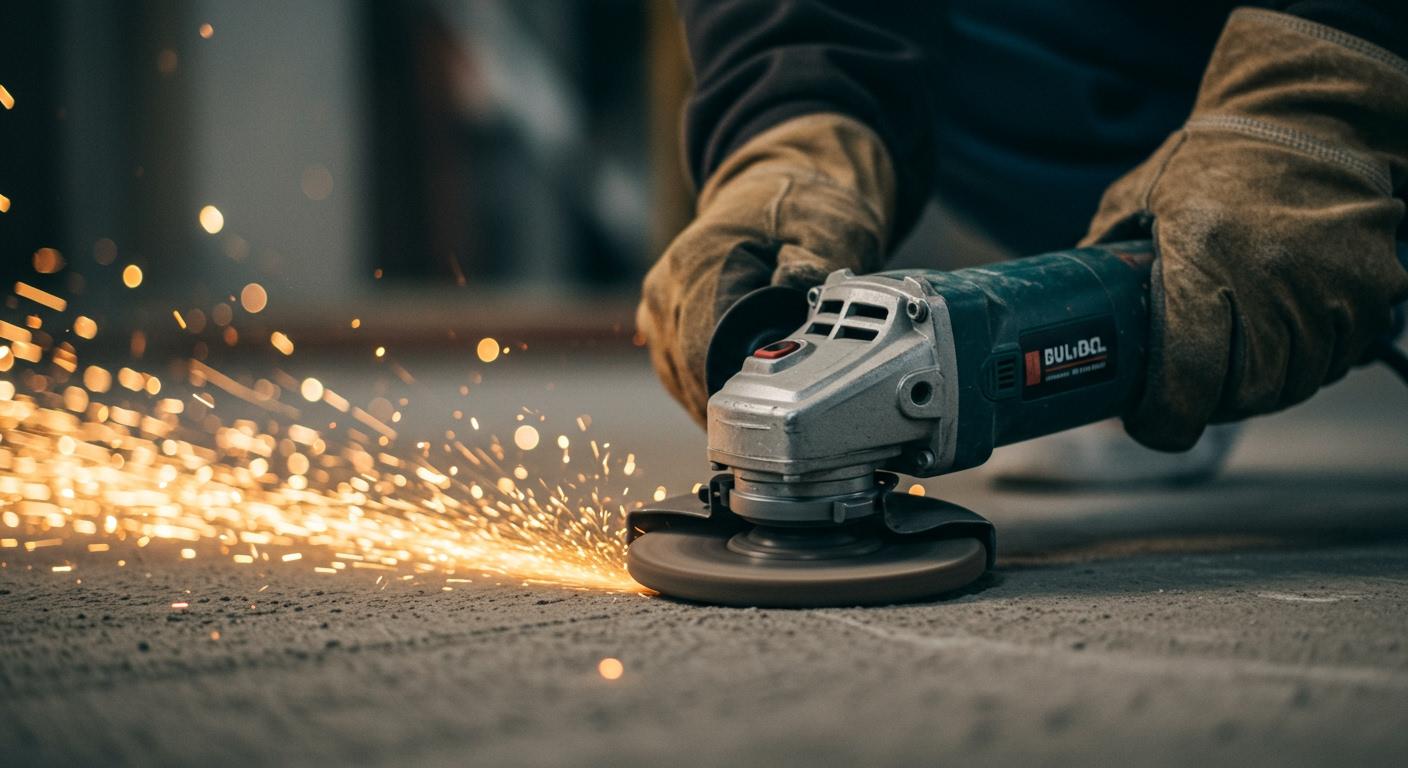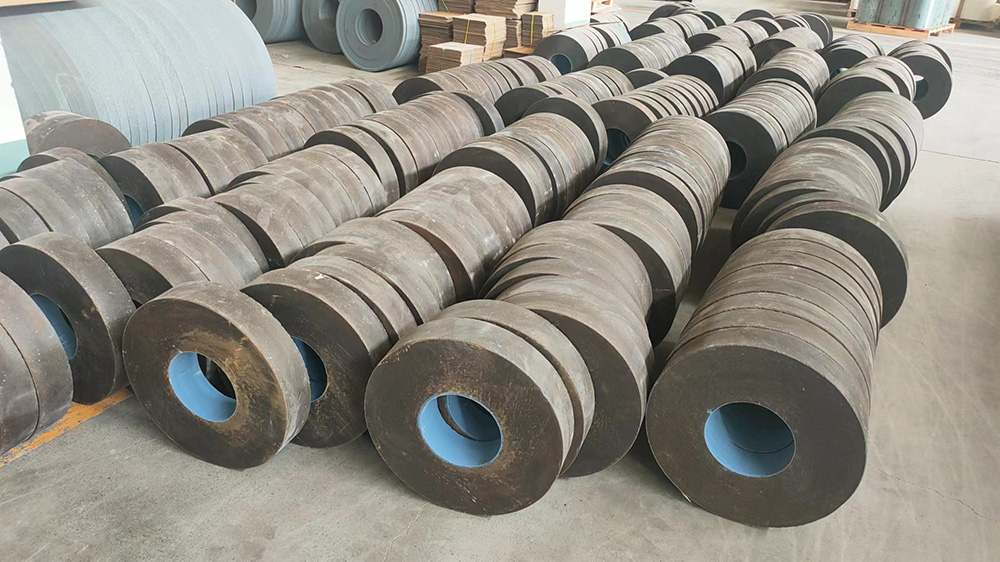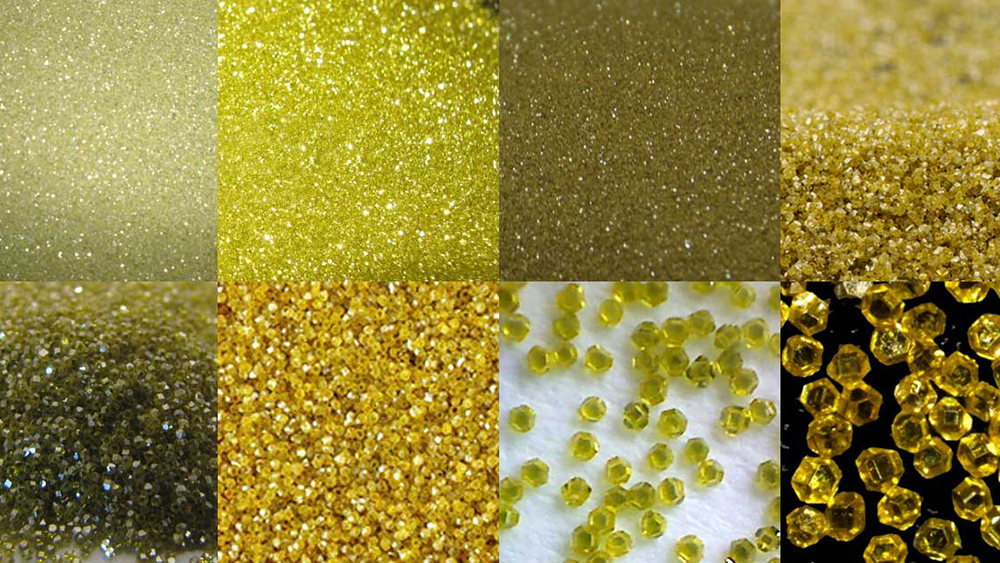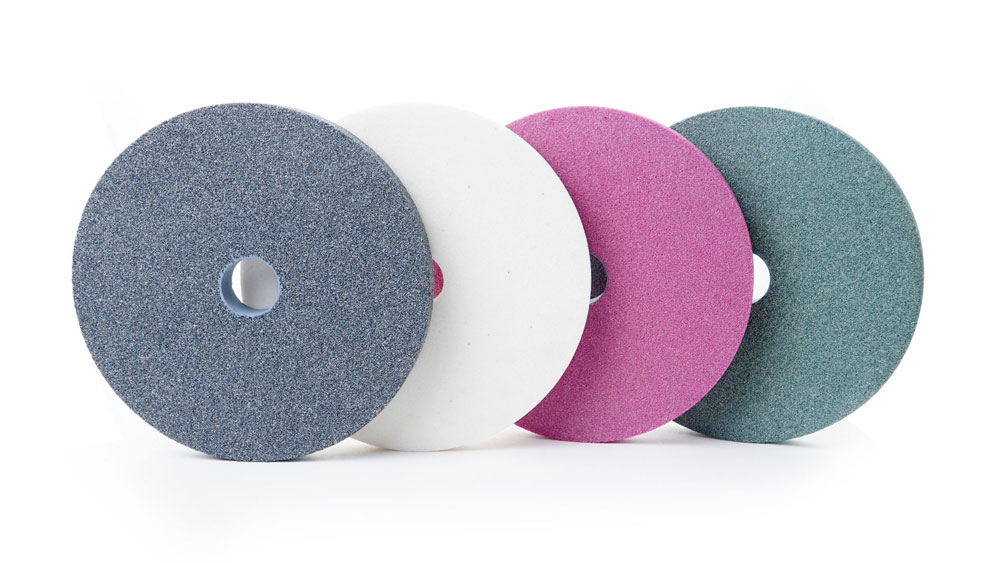Selecting the perfect cup grinding wheel comes down to four key factors to consider for your grinding projects.
- Abrasive Material
- Bond Hardness
- Grit Size
- Wheel Design
Successful grinding depends on matching the wheel to the task. With the abrasive wheel market growing, knowing how to choose the right wheel with the correct grit is vital. This guide will help you master the wheel selection process for any grinding job.

Key Takeaways
- Match the abrasive material to the item you are grinding. Diamond wheels work best for concrete. Silicon carbide is good for soft metals. Aluminum oxide is for iron-based metals.
- Choose the right bond hardness for your material. Use a soft bond for hard materials. Use a hard bond for soft materials.
- Select the grit size based on the finish you want. Coarse grit removes a lot of material quickly. Fine grit makes surfaces smooth.
- Pick a wheel design that fits your project. Single-row wheels grind faster. Double-row wheels give a smoother finish. Turbo wheels offer a good balance of speed and smoothness.
Step 1: Match the Abrasive to the Material
Your first and most important decision is matching the abrasive grain to the material you are grinding. The right abrasive ensures efficient work and a quality finish. Making the wrong choice can damage your wheel, harm your workpiece, and waste your time. Let’s break down the three main abrasive types.
Diamond for Concrete Grinding Wheel Use
You should choose a diamond wheel for grinding hard, brittle materials. This includes concrete floors, stone, and masonry. A diamond concrete grinding wheel is your best tool for tough jobs like surface preparation and coating removal. If you need to strip old epoxy from a concrete floor, a diamond wheel is the right choice.
Pro Tip: Synthetic diamond is the hardest known material, with a Mohs hardness of 10. This incredible hardness allows a diamond concrete grinding wheel to cut through tough concrete with ease. Its high thermal conductivity also helps pull heat away from the grinding surface, which protects both the wheel and the concrete.
For any serious concrete grinding project, a diamond concrete grinding wheel delivers the power needed for effective surface preparation and coating removal. This wheel is essential for preparing concrete surfaces.
Silicon Carbide for Non-Ferrous Metals
Silicon carbide is perfect for grinding non-ferrous metals like aluminum and brass. It is also effective on softer stones. This material has a unique property called friability. This means the grains break down during grinding, constantly exposing new, sharp cutting edges. This self-sharpening action provides a fast cutting rate. For softer stones like marble, black silicon carbide is an excellent choice due to its toughness and wear resistance, making it great for grinding applications.
Aluminum Oxide for Ferrous Metals
You will use an aluminum oxide wheel for grinding ferrous metals. These are metals that contain iron, such as steel, stainless steel, and cast iron. This abrasive is tough and durable, making it ideal for tasks like grinding down welds and deburring sharp edges. An aluminum oxide wheel provides consistent performance for general-purpose metal grinding. This makes it a staple for any metalworking shop focused on surface preparation and finishing.
Step 2: Select the Bond for Your Application
After choosing your abrasive, you must select the correct bond hardness. The bond is the glue that holds the abrasive grains together in the wheel. The rule is simple but important: you should match the bond hardness inversely to the material’s hardness. This means you use a soft bond for hard materials and a hard bond for soft materials. This principle ensures your grinding wheel works efficiently and lasts longer.
Soft Bonds for Hard Materials
You should choose a soft bond wheel for grinding very hard materials. Think of materials like granite, porcelain, or hardened tool steels. When you are grinding a hard surface, the abrasive grains on your wheel can get dull quickly. A soft bond helps solve this problem. The friction from the grinding process wears away the soft bond. This erosion releases the dull abrasive grains and exposes fresh, sharp ones underneath. This process lets the wheel sharpen itself as you work.
Pro Tip: Using a hard bond on a hard material causes a problem called “glazing.” The bond won’t wear away, so the dull abrasives just slide over the surface. This creates heat but stops the grinding action.
Resin and vitrified bonds are common soft bond types. You can use them for grinding tough metals like:
- High-Speed Steel (HSS)
- A Series and T Series tool steels
- Most stainless steels
This table shows recommended bond hardness for common hard materials:
| Material Being Cut | Material Hardness | Recommended Bond Hardness |
|---|---|---|
| Porcelain, Granite | Very Hard | Soft |
| Marble, Ceramic Tile | Hard | Soft to Medium |
Hard Bonds for Soft Materials
You will use a hard bond wheel for grinding softer materials. This includes non-ferrous metals like aluminum or softer stones. When you are grinding a soft material, the abrasive grains stay sharp for a longer time. You do not need the bond to wear away quickly. A hard bond holds onto the abrasive grains securely. This extends the life of your grinding wheel and prevents it from wearing down too fast. Choosing the right bond is a key step for successful grinding.
Step 3: Choose Grit Size for Finish Quality
Your choice of grit size directly controls the speed of your work and the quality of your final surface. The system is simple: a lower grit number means larger, coarser abrasive particles. This provides fast, efficient material removal. A higher grit number means finer particles, which results in a smoother finish. Understanding this trade-off is key to selecting the right wheel for every stage of your project, from initial surface preparation to final polishing.

Coarse Grit for Aggressive Removal
You should select a coarse grit wheel for aggressive jobs. These wheels typically have a grit range of 16 to 30. They are designed for rapid, heavy-duty grinding. Use a coarse grit wheel when you need to level an uneven concrete floor or perform major surface preparation. The large abrasive particles tear through material quickly. This makes them perfect for tasks where efficient material removal is more important than a perfect finish. This type of grinding is the first step in many surface preparation projects.
Medium Grit for General Purpose Grinding
You will find medium grit wheels are the most versatile option for many tasks. Ranging from 40 to 80 grit, they offer a great balance between removal speed and finish quality. A 40-grit wheel removes material faster but leaves a coarser surface. An 80-grit wheel works slower but produces a smoother finish. This makes medium grit ideal for general-purpose grinding, blending surfaces, and light coating removal. You can effectively use this grit range to strip away materials like old paint or thin-set mortar before final grinding.
Fine Grit for Polishing and Finishing
When your goal is a polished surface, you need a fine grit wheel. These wheels have a grit of 100 or higher. You use them for the final steps of a project, not for heavy material removal. The fine abrasive particles create a smooth, refined surface with a low roughness average (Ra). This level of grinding is essential for achieving a professional, polished look. A fine grit wheel delivers the smoothest finish possible.
Pro Tip: When using a fine grit wheel for finishing metals like stainless steel, apply a lubricant or grease stick. This prevents the wheel from “loading” with metal particles, extends its life, and helps you achieve an even smoother finish.
Step 4: Pick the Right Wheel Design

The final step in your selection process is to choose the right wheel design. The shape and arrangement of the diamond segments on diamond cup wheels directly impact performance. Your choice will affect grinding speed, the final finish, and even dust control on your concrete project.
Single and Double Row Designs
You will often choose between single and double row diamond cup wheels. The choice depends on your project’s needs.
- Single Row: You should select a single row diamond wheel for faster, more aggressive grinding. This design is excellent for heavy material removal on concrete and masonry.
- Double Row: You should use a double row diamond cup wheel when you need the smoothest possible finish. The extra row of diamond segments provides more surface contact for a finer result.
The physical design of the diamond segments also affects dust extraction. Some diamond cup wheels feature special segments that improve airflow, helping your dust shroud work more efficiently. This makes your concrete grinding work cleaner and safer.
Turbo Diamond Cup Wheels
You can also choose a turbo diamond cup wheel for your projects. These diamond cup wheels combine speed with a smooth finish. A turbo diamond cup wheel has a continuous rim with cooling vents. This design offers several advantages for concrete grinding.
Pro Tip: The spiral pattern on a turbo diamond wheel helps cool the wheel during high-speed grinding. Better cooling protects the diamond segments from heat damage and extends the life of your wheel.
This table shows how design affects cooling:
| Wheel Design | Cooling Feature | Performance Benefit |
|---|---|---|
| Standard Wheel | Basic Airflow | Good for general tasks |
| Turbo Wheel | Enhanced Spiral Vents | Better for faster grinding |
While a standard segmented diamond wheel is fast, a turbo diamond cup wheel often provides a superior balance of speed and a smoother finish on concrete. This makes it a versatile and powerful option for many concrete surface preparation jobs. The unique design of these diamond cup wheels ensures efficient diamond performance on tough concrete.
Choosing Your Diamond Grinding Wheels

When your project demands the highest level of precision and durability, you need specialized diamond tools. As a specialist in customized grinding solutions, Aimgrind engineers high-performance diamond grinding wheels for the toughest jobs. You can achieve superior results on hard alloys, ceramics, and composites with the right wheel. This choice is critical for both a standard concrete grinding wheel and advanced diamond cup wheels.
Key Cup Grinding Wheel Applications
You will find that diamond cup wheels have many applications. The most common grinding application is for concrete surface preparation. A concrete grinding wheel excels at leveling concrete floors and removing coatings. However, the applications for a cup grinding wheel extend into high-tech industries. The aerospace sector uses diamond cup wheels for grinding engine parts and turbine blades. These demanding applications require extreme precision on materials like titanium alloys and ceramic composites. The growing need for fine finishes and durability in these sectors drives innovation in diamond wheel technology. This makes your choice of wheel vital for any grinding application on concrete or advanced materials.
Bond Types and Their Uses
Aimgrind offers different bond types to match your specific grinding application. Your choice of bond affects the wheel’s performance, finish quality, and removal speed. You must understand these applications and best practices to select the correct diamond wheel. A resin bond offers a smooth finish, while a metal bond provides a long lifespan. A vitrified bond gives you excellent shape retention for precision grinding.
Pro Tip: For a tough material like tungsten carbide, you can use a two-step grinding process. Use a vitrified bond diamond wheel for rough grinding and a resin bond diamond wheel for fine grinding. This improves efficiency and reduces costs.
This table breaks down the bond types for your grinding application:
| Bond Type | Key Characteristics | Best For |
|---|---|---|
| Vitrified | Rigid, porous, excellent heat resistance | Precision grinding on hard, brittle materials |
| Resin | Flexible, self-sharpening, smooth finish | General-purpose grinding and fine finishing |
| Metal | High strength, very long lifespan, aggressive | High material removal on hard materials like concrete |
Advantages of Premium Wheels
You may wonder if a premium wheel is worth the cost. A premium cup grinding wheel with high-quality diamond segments delivers significant advantages. These diamond cup wheels offer a much longer lifespan and better performance. Studies show that using a premium wheel can increase your productivity by over 30%. You will change your concrete grinding wheel less often. This reduces downtime and lowers your long-term costs. Investing in quality diamond grinding wheels enhances your efficiency and helps you achieve a professional finish on every grinding application, from concrete to composites. The superior diamond quality ensures consistent performance for any grinding task.
You can now choose the right wheel for your projects. A methodical approach to grinding ensures safety and a professional finish. Your safety depends on selecting the correct wheel. Follow these safety precautions.
Your Quick-Reference Checklist: ✅
- Material -> Choose your abrasive.
- Hardness -> Select your bond.
- Finish -> Pick your grit.
- Speed -> Decide your wheel design.
This process guarantees optimal performance. For specialized grinding projects, consult experts like Aimgrind. We provide customized cup grinding wheel solutions for peak performance and safety. Always follow safety precautions for every wheel.
FAQ
How do I properly maintain my diamond cup wheel?
You should perform regular maintenance to extend your wheel’s life. Clean the wheel after each use to remove debris. Inspect it for cracks or damage before you start grinding. Proper maintenance ensures the wheel operates safely and effectively.
Can I use one cup wheel for both concrete and metal?
You should not use the same wheel for different materials. A wheel for concrete has a different abrasive and bond than one for metal. Using the wrong wheel can cause poor performance and damage. Always match the wheel to the material.
What safety gear is essential for grinding?
You must always wear proper safety gear. This includes safety glasses or a face shield, hearing protection, and a dust mask or respirator. Gloves and steel-toed boots are also important for your protection during any grinding job.
What does proper wheel maintenance involve?
Proper wheel maintenance includes cleaning and inspection. After grinding concrete, you should clear away any dust buildup. Before every use, check for any signs of wear or damage. This simple maintenance routine keeps your tools in top condition.
See Also
Selecting the Optimal Grinding Wheel for Your Carbide Tool Needs
Finding the Ideal Grinding Wheel Dresser for Your Specific Requirements
Selecting the Perfect Grinding Wheel for Your Circular Saw Blade
Exploring Various Grinding Wheel Types and Their Real-World Uses
Mastering Safe and Effective Use of Your Dremel Grinding Wheel
Contact Us
For More Grinding Solution or Customized Abrasive Tools




